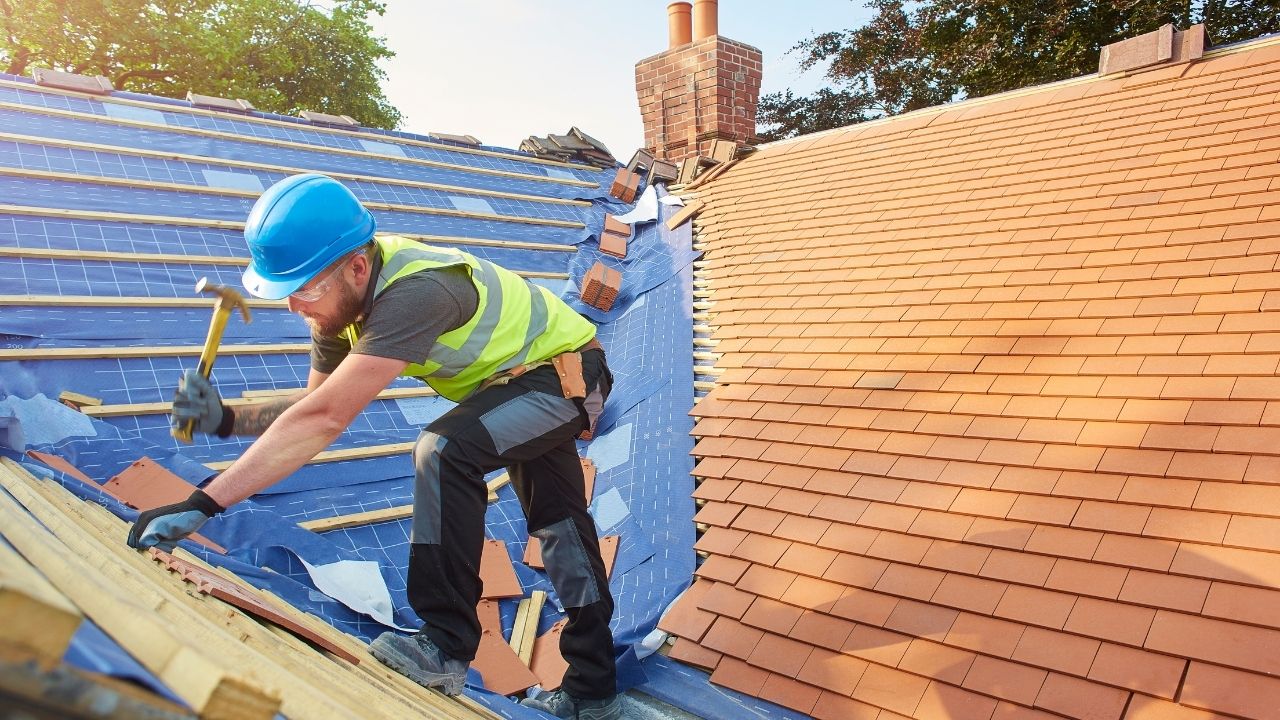
Fiberglass felts are made of cellulose fibers, which have been infused with bitumen or asphalt. These materials are resistant to tearing, and they can withstand severe weather conditions. Some asphalt-impregnated fiberglass fels can outperform conventional materials. This makes them the best roofing material for many applications. Fiberglass felts have their own drawbacks. We will be discussing some of the drawbacks and benefits of this material in the following article.
Fiberglass-reinforced shingles are an ideal choice for repairing and maintaining roofs. They are fire-resistant and resist curling or pulling away from fasteners. Several manufacturers offer this material as part of their Total Protection Roofing System. Although it is more costly than organic shingles this roofing material is still worth it. This is the ideal solution for people who worry about leaking but don't want the damage to their roof.

A superior roofing felt is heavier, but it will last longer and be safer to use. It can be purchased in sheets greater than 36 inches wide and is much more durable than fiberglass roofing sheet. This material is more costly, but it will cut down on seams and save you money over the long-term. You can also overlap the sheets more easily and straighter with some rolls that have a line printed. This makes it an excellent choice when you are looking for roofing materials.
A 30 pound fiberglass felt comes in lengths of 72 feet and is 3 feet wide. Each roll contains two squares, each weighing approximately 30 pounds. In terms of performance, fiberglass felts can be classified according to ASTM D226 or D4897 requirements. Asphalt-impregnated felts are best suited for roofs with low slopes. This is where the roof can retain moisture.
Fiberglass-impregnated felts are made from asphalt-impregnated fiberglass. Perforated felts allow water to drain off the roof. Waterproof is a saturated type. This material is great for those who are concerned about moisture and rot. The advantage of using a felt is that it can be replaced more easily than fibreglass. Fibreglass is more expensive than felt. A 30-pound roll will last about 10 years.

A fiberglass-impregnated felt is recommended for composite asphalt shingle roofs. You should use it with caution when installing wood-shingle rooftops. It will prevent air circulation. Water will also collect which will affect the life of wood-shingles. A shingle roof does not need an underlayment, despite what the manufacturers claim. You can consult a roofing professional if you are unsure about the differences. Remember to only work with reputable suppliers and to follow the manufacturer's instructions.
There are several advantages to using a fiberglass-fiberglass blend. The roof will be protected from dust accumulation by using a high-quality blend felt. It is less expensive than 100% aramid or pps felt. And it is resistant to fire and ultraviolet degradation. It lasts longer because it is stronger. In addition, it is easier to install than traditional asphalt-fiberglass-felt roofs. Its flexible, flexible composition makes it a great choice when installing steep-slope roofing.
FAQ
What Does it Cost to Renovate Your House?
The type of material, the project size and the complexity of renovations will all impact the cost. Certain materials, such as wood, require special tools like drills and saws. Others like steel don't. The price of renovations depends on whether you hire a contractor to do the job or if you are willing to do the work yourself.
Home improvement projects cost on average $1,000 to $10,000. The cost to hire professionals would be anywhere from $5,000 to $25,000. The total cost of hiring professionals could be anywhere from $5,000 to $25,000. If you choose to complete the task yourself, it could run up to $100,000.
You should know that there are many factors which determine the final cost of renovation. They include the type of material used (e.g. Brick vs. concrete, the project's size, the number and duration of workers, etc. When estimating the total cost for renovation, it is important to keep these factors in your mind.
How do you choose a good contractor to work with?
When choosing a contractor, ask friends and family members for recommendations. Online reviews are also a good option. Check to make sure the contractor has experience with the type of construction you are looking for. Request references and make sure to verify them.
How important it is to be pre-approved for loans?
It is important to get preapproved for a mortgage because you will know how much you can borrow. This will help you decide if you are eligible for a loan program.
Statistics
- They'll usually lend up to 90% of your home's "as-completed" value, but no more than $424,100 in most locales or $636,150 in high-cost areas. (kiplinger.com)
- ‘The potential added value of a loft conversion, which could create an extra bedroom and ensuite, could be as much as 20 per cent and 15 per cent for a garage conversion.' (realhomes.com)
- According to the National Association of the Remodeling Industry's 2019 remodeling impact report , realtors estimate that homeowners can recover 59% of the cost of a complete kitchen renovation if they sell their home. (bhg.com)
- It is advisable, however, to have a contingency of 10–20 per cent to allow for the unexpected expenses that can arise when renovating older homes. (realhomes.com)
- Most lenders will lend you up to 75% or 80% of the appraised value of your home, but some will go higher. (kiplinger.com)
External Links
How To
5 Things You Should Know Before Starting Your House Renovation
-
This is a big undertaking. It's likely that you will need assistance if you plan to tackle a large home improvement project, such as remodeling your kitchen or bathroom or building a new home. If you aren't confident enough to take on such a daunting task, you may want to reconsider. It can take up your time and cost you money. You won't reap the benefits. Instead, why not hire someone who knows what they're doing to help out? They'll save your time and make it easy for you to have a wonderful place to call home.
-
How much should I spend? This one may seem obvious, however spending too much on renovation projects could make matters worse. Because you will likely end up paying most of the costs back at the conclusion of the day. Keep your budget in mind. You could wind up spending a lot and not getting any return.
-
Do I hire professionals or do I need to DIY? - While there is no right or wrong answer, we recommend that you hire professional tradespeople if possible. After all, they'll be able to give you advice on how best to proceed with your project. They will install the plumbing correctly, take care of safety, and offer a guarantee after they have finished their work. DIY projects are often a trial-and-error process, so you'll need to learn a lot from your mistakes. You'll also have to deal with any problems that may arise throughout the process.
-
Can I afford it - Do not underestimate how expensive a renovation project will cost. Even if your budget is tight, you may need to borrow money to cover costs. And if you're planning to sell your current property soon after completing the renovations, you'll definitely need to factor in the price of selling it into your calculations.
-
Where do I start? There is no right or wrong place to begin when it comes to starting. But, we recommend you pick something you love to work on. If you enjoy what you do, you will be more motivated to continue working and less likely procrastinate. Also, try to avoid places that require a lot of maintenance. If your living area is constantly cluttered with dust and dirt, you should not attempt to redesign it.